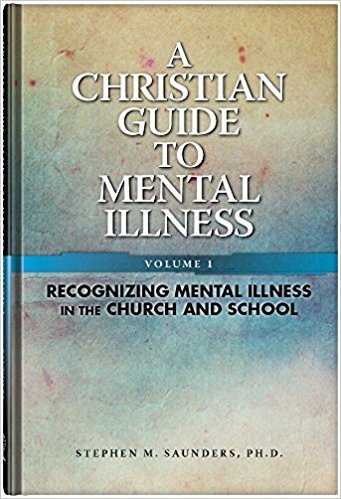Stephen M. Saunders
Milwaukee: Northwestern, 2016. 478 pages. $43.00.

Reviewed by Gary W. Zieroth on 02/05/2018
Pastors often wonder what to do when a church member appears to have a mental illness or a mental health problem. Saunders, a Christian professor of psychology, helps church workers identify and understand mental illness. Saunders notes that “about one out of five adults in the United States will experience a mental illness during any given year,” (35) and church members often seek out the help of their pastor.
This book is written in three parts. Part One covers the basics of mental illness, discusses formal definitions, and reviews the devastating effects mental illness has on individuals, couples, families, and society in general. Part Two details the various types of mental illness from the more common disorders— depression- and anxiety-related disorders, personality disorders, substance use disorders—to the less common mental illnesses such as somatization and sexual disorders. Part Three discusses the essential role of the church in the understanding, care, and treatment of such persons and their loved ones. Chapter 20 specifically reviews mental illness from the perspective of Scripture and church history. In the area of Lutheran theology, Saunders does a superb job in distinguishing Luther’s theology of glory from the theology of the cross. The common mistake Christians can make is to conclude that the “reason” for their suffering is a “lack of faith,” which leads to guilt and shame that they are not good enough Christians. Christians who fall prey to this theology of glory, says Saunders, are more likely to reject their faith than to adopt the proper theology. A proper Christian understanding of mental illness rejects this theology and holds fast to Christ. In the midst of suffering, a Christian will learn to embrace the theology of the cross. Like many of those who have gone before us, men and women of great faith in the midst of suffering have held to the promises of God, clung to their faith, and continued to look forward to the comfort and confidence of eternal salvation in Christ.
Saunder’s last chapter includes the three essential roles the church plays in the care of persons with mental illness. He concludes that people need encouragement and support from their church and the comfort of the gospel. Even though this book is heavily weighted on the diagnosis and descriptive side of things, it is highly accessible to both clergy and laity, using many vignettes throughout to make it more user-friendly and personable. I would highly recommend it as a primary resource to be used within the church and parish school. The second volume will deal more with approaching a person you may believe has a mental illness and is not being treated, and how to make a referral.



